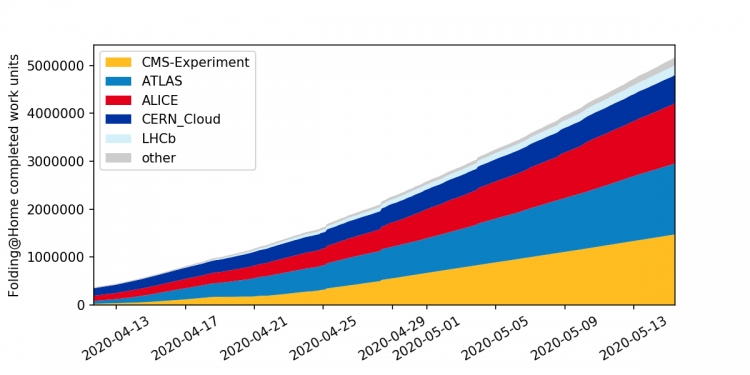
The COVID-19 pandemic is having widespread impacts close to home and around the world. COVID-19 will certainly change the way the CMS collaboration will function as an experiment. Vast portions our research depend on global interactions to be efficient, or even to be able to be done at all. While many of us can effectively telework, numerous CMS collaborators have volunteered to work on initiatives related to aspects of COVID-19 impacts on our respective local communities, and to more broadly leverage the large scientific community connected to CMS.
The Point 5 community is working to establish procedures and the necessary personal protective equipment for working in the experimental facilities of CMS. Volunteer design and production of face shields and masks, evaluating the use of social distancing aids appropriate for P5 needs and evaluating the effectiveness of UV sterilization of equipment. Some of these initiatives, such as BTN masks target the broader CERN community and local area to donate materials and equipment. This has included making face-shields available to other CERN organizations, and masks as well as their design available for the community around P5 and CERN. These efforts have also benefited from donations of time, materials and money from collaborators as well as local community organizations.
The development of simple, inexpensive and fast-to-build mechanical ventilators. Initiatives to which CMS members contribute include the Mechanical Ventilator Milano (MVM) and the Princeton Open Ventilation Monitor. The MVM is an international effort of over 250 scientists and engineers, open, ventilator which has now in the midst of getting regulatory approval. The Princeton initiative is developing monitoring and alarms for patients under non-invasive helmet ventilation together with its regional healthcare system.
CMS members, together with the LHC computing community at large, engaged with Folding@Home (F@H) project in the middle of March. F@H is an application capable of running protein simulations on any sort of computing system. Interactions have included everything from running COVID19 simulations using F@H applications in Point 5 and across the CMS computing grid, to working on challenges faced by the F@H scientists as they now have access to a dramatically larger set of computing resources. The CERN community has given enough computing (nearly 100k computing cores on average) to be a major part of the F@H network, including 30k from the Point 5 computing resource using used for the CMS high-level trigger, rapidly rising to one of the top 100 absolute contributors to the project.
Other regional initiatives involving CMS computing facilities include a collaboration between INFN and Sibylla Biotech on protein folding simulations. More than 5 million core-hours were used, and first results have already been published. The Open Science Grid has joined a larger COVID-19 High Performance Computing Consortium to provide needed compute resources to COVID-19 researchers.
Finally, CMS members are broadly involved in numerous other scientific initiatives. These include organizing an American Physical Society session on COVID-19 initiatives in physics; joining community hackathons; creating websites to track epidemiological statistics (such as COVIDSTAT INFN) or to connect HEP researchers interested in COVID-19 issues.
- Log in to post comments

